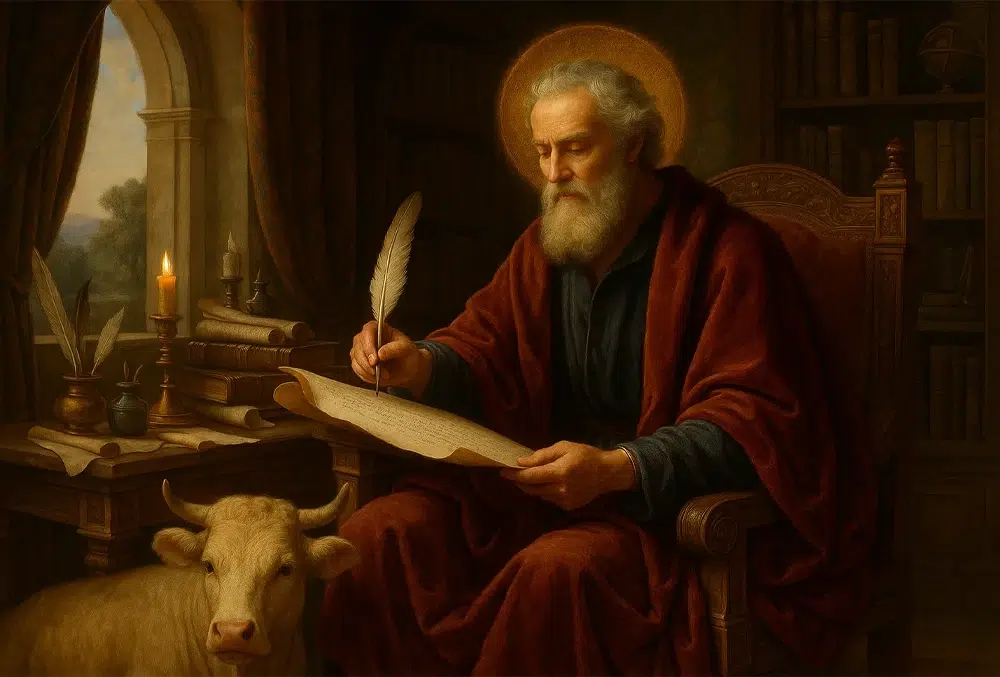
Saint Luke was born in Antioch. His origin was Gentile, probably Greek, and he dedicated himself to medicine. After converting to Christianity around the year 40, he accompanied St. Paul on his second apostolic journey and spent the last part of the apostle's life with him at the time of his captivity in Rome. He is the author of the third Gospel and the Acts of the Apostles.
There are figures who, without having known Jesus directly, managed to transmit in their account of the Lord's life a special vividness and tenderness. One such man was St. Luke'sHe was the physician loved by St. Paul and the chronicler who most detailed the infancy of Jesus among all the evangelists. He is the one who has best shown us that period of the Lord's life.
St. Luke offers details that help us consider the humanity of Jesus Christ and the normality of the life of the Holy Family: how Our Lord was wrapped in swaddling clothes and laid in a manger, the purification of Mary and the presentation of the Child in the temple, the loss of Jesus in Jerusalem... Probably any family of that time lived through similar situations. And surely it was Our Mother the Virgin Mary who told it to them firsthand.
He was not an apostle of the first hour, no; his vocation was the same as that of any Christian, but it was a call to investigate, to order and to present the Truth with the precision of a physician and the soul of an artist.
From very early times, St. Luke received the title of painter of the Virgin. Because he is the evangelist who most clearly traces the figure of Mary as a model of correspondence to God. Of her he emphasizes that she is full of grace, she conceives by the Holy Spirit, she will be blessed for all generations....
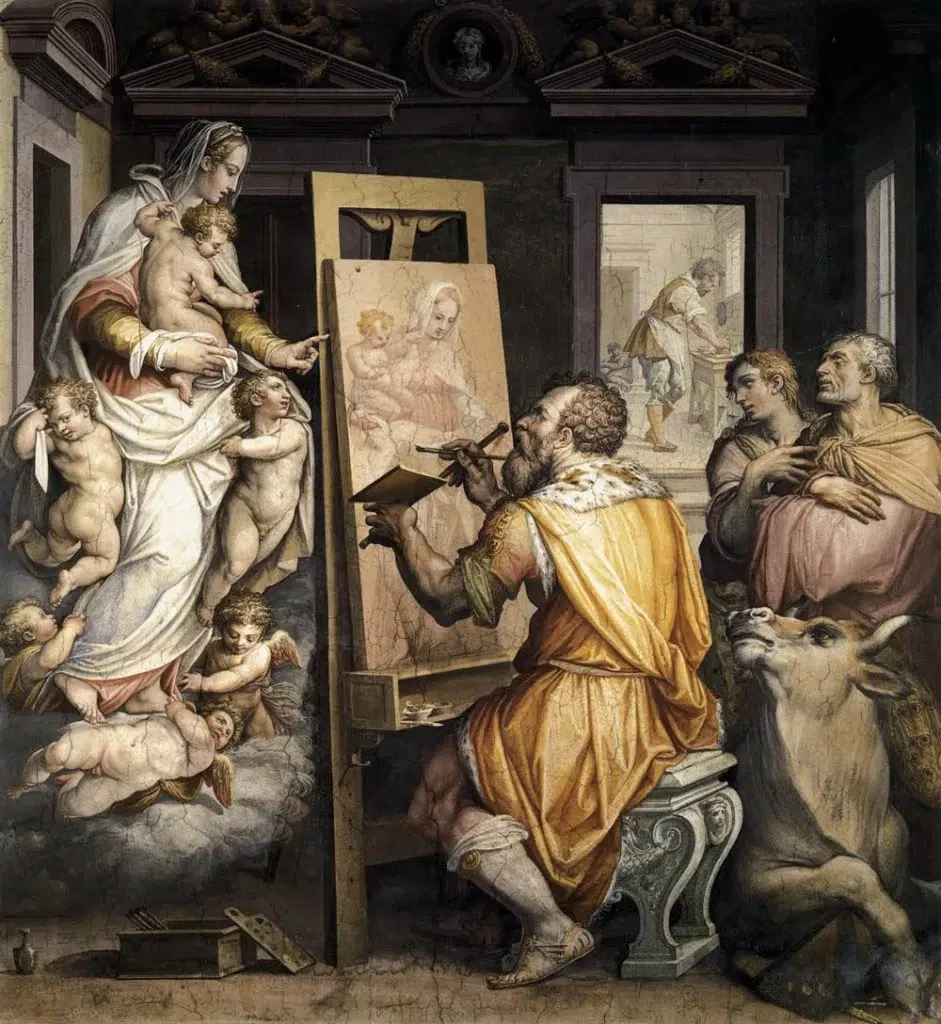
At the same time, it expresses that she responds with fidelity and gratitude to all these divine graces: she receives with humility the angel's announcement, she surrenders herself to the divine plans, she observes the customs of her people....
His story does not begin with a miraculous catch of fish or a direct call to the seashore. St. Luke was a learned man, instructed in the science of Hippocrates, a Gentile whose mind was trained to observe in detail and contrast. That attentive gaze allowed him to approach with precision and clarity the life and figure of the carpenter of Nazareth. His gospel is, in a sense, a detailed history of salvation from birth to death, resurrection, ascension and appearance to different groups of disciples and the apostles.
Providence weaves threads in unsuspected ways. Luke's path crossed that of Saul of Tarsus, the persecutor turned Paul, apostle to the Gentiles. In the Acts of the Apostles, the second part of his work, where Luke himself, with humility, uses the pronoun "we," he includes himself in the missionary adventure of St. Paul. He became his inseparable companion, confidant and, as Paul himself calls him in the letter to the Colossians, 'the beloved physician'"' (Col 4:14).
It is easy to imagine these two great saints conversing during long voyages across the Mediterranean or during nights in prison. Paul, the passionate apostle; Luke, the methodical observer. Perhaps from these dialogues, from this sharing of faith and mission, or perhaps at the invitation of St. Paul, the conviction was born in St. Luke to put down in writing, and in an orderly way, everything that had happened.
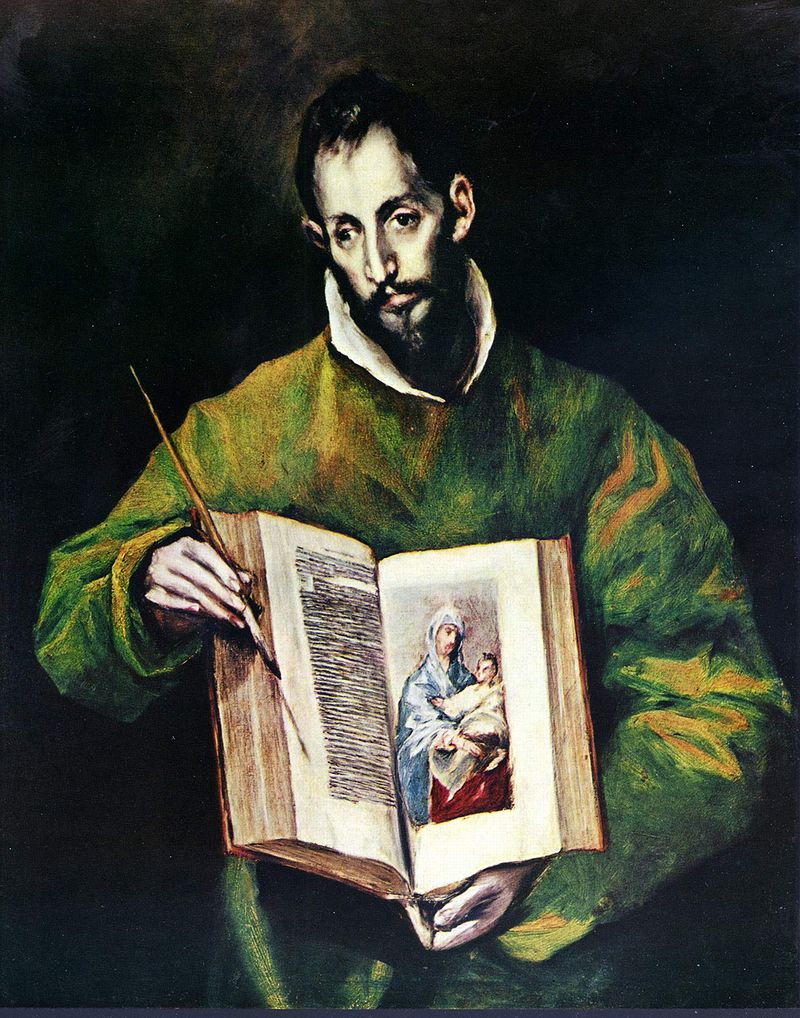
He was not satisfied with what he had heard; as a good investigator, "it seemed to me also, after I had accurately reported everything from the beginning, to write it down for you in an orderly fashion, distinguished Theophilus" (Lk 1:3), interviewing the eyewitnesses, those who had seen, heard and touched the Word made flesh.
According to a very ancient tradition, who better to tell her the mysteries of Jesus' infancy than Jesus herself? Virgin Mary? Your Gospel is the most Marian one, the one that gives us the MagnificatIt is the one that allows us to look into the Immaculate Heart of Our Mother Mary.
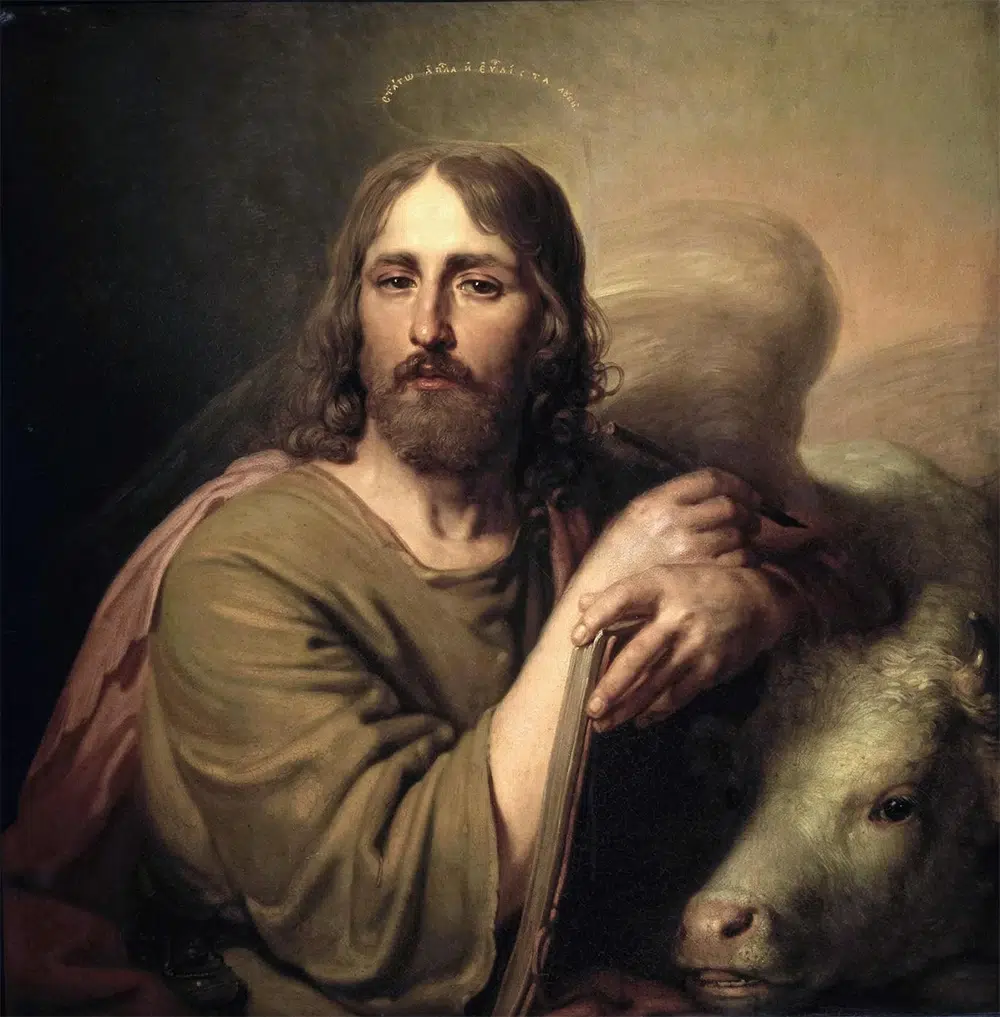
It is not known how St. Luke's died and appeared before the Judgment of God. Some sources indicate that he may have been martyred, but other traditions indicate that he died at the age of 84, after a patient, meticulous and God-inspired work.
His work: the Gospel and the Acts of the Apostles, two books, one story: the story of the love of God who became man and who continues to live and act in his Church by the power of the Holy Spirit. And with St. Luke as a faithful companion of St. Paul on his missionary journeys, he documented the beginnings of the Church.
If we were to define the third Gospel with a single word, it would be mercy. Luke presents a Jesus who constantly comes to heal human frailty. It is the parable of the Good Samaritan, of the lost sheep, of the prodigal son....
It is the Gospel that shows us a God who never tires of forgiving, who runs to embrace the repentant sinner and who celebrates a feast in heaven for every conversion. As the Catechism of the Catholic Church reminds us in number 125, "the Gospels are the heart of all the Scriptures because they are the chief witness to the life and teaching of the Word made flesh, our Savior." Luke's work is an eloquent witness to this truth.
His pen, guided by the Holy Spirit, not only brought his addressee, the illustrious Theophilus, out of doubt, but has continued to bring souls closer over the course of twenty centuries, reminding us that holiness is not the absence of pain, but allowing oneself to be accompanied by the Divine Physician, Christ.
In the Acts of the Apostles, Luke focuses on the nascent Church, but the protagonist remains the same: the Holy Spirit. He narrates with detail and emotion the adventure of the first Christians, the persecutions, Paul's journeys, the miracles and, above all, the irrepressible spread of the Good News. It teaches us that the vocation Christianity begins with a personal encounter with Christ that impels one to carry out the mission: witnesses to the ends of the earth.
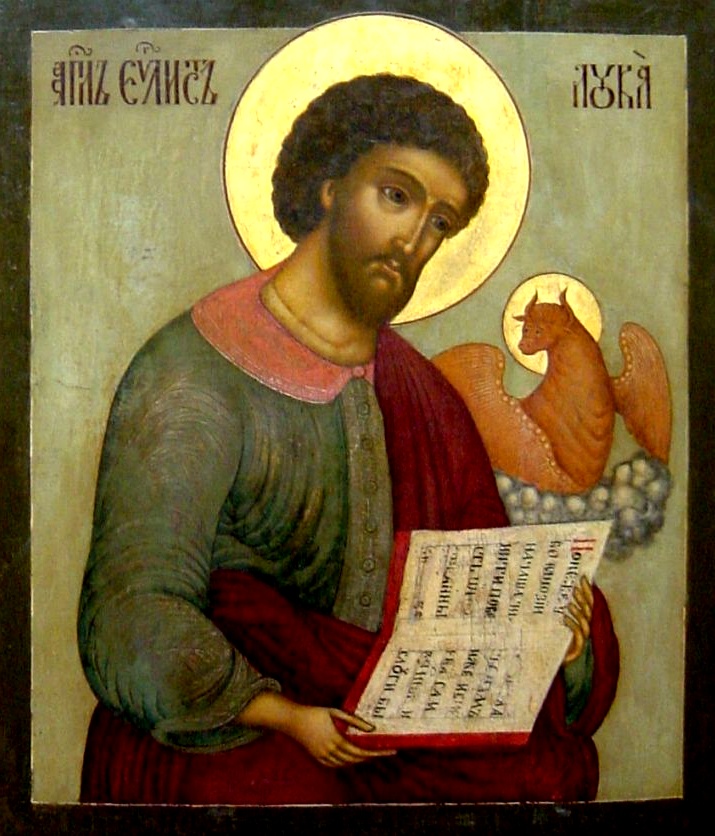
The work of St. Luke's is, in short, a hymn to the faithfulness of God and to the greatness of the vocation human. A physician from Antioch, a man who did not know Jesus personallybecame, by the grace of God and his diligent work, one of his most faithful portraitists, bequeathing to us a gospel which is a balm for the soul and a road map for the Church of all times.
As Pope Francis shows us in a 2019 catechesis "in the Acts of the Apostles, St. Luke shows us the Church of Jerusalem as the paradigm of every Christian community. The Christians persevered in the teaching of the apostles, in communion, they remembered the Lord through the breaking of bread, that is, the Eucharist, and they dialogued with God in prayer.
The believers lived all together, conscious of the bond that unites them as brothers and sisters in Christ, feeling especially called to share with everyone spiritual and material goods, according to the needs of each one. Thus, by sharing the Word of God and also the bread, the Church becomes the leaven of a new world in which justice, solidarity and compassion flourish.
The book of Acts adds that the disciples went daily to the temple, broke bread in their homes and praised God. Indeed, the liturgy is not just another aspect of the Church, but the expression of its essence, the place where we meet the Risen One and experience his love."